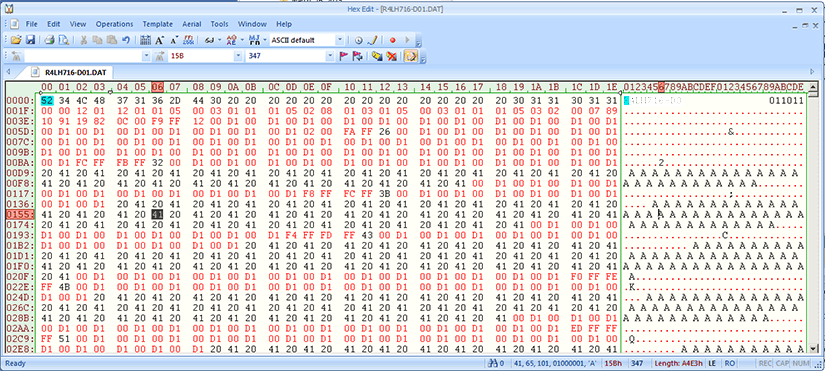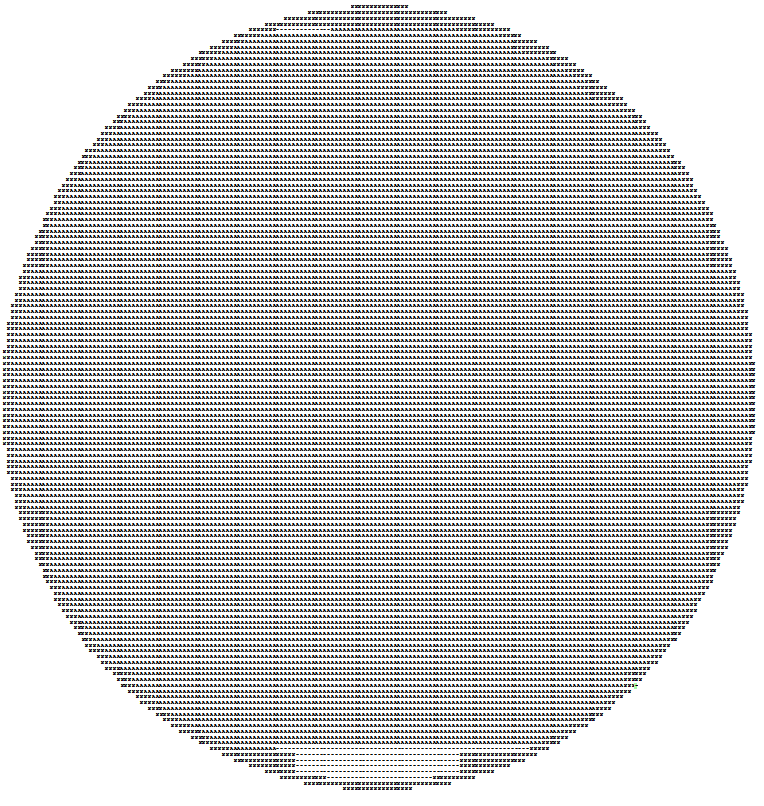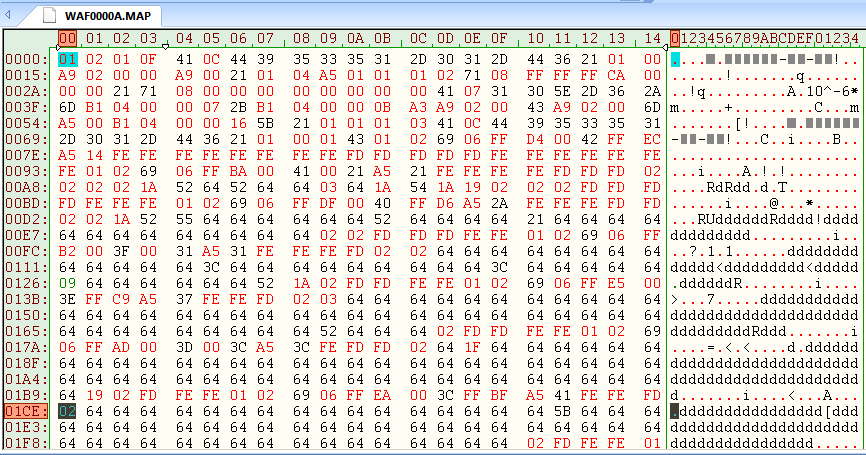Binary Map Formats
Unless one has documentation from the binary file creator, it is very difficult to extract useful information from just a sample file.
However in one case we were able to reverse engineer the map data (though not all the other data as we did not have the encoding information)
The file has a name in the form: wafer.dat
When we examined it in a hex editor we see something like this:

Other than some ASCII text in the beginning there's not much to see except some repeating values that are likely the die ID's in some sort of array. After some educated guessing and experimentation we were able to extract that section of the binary file and convert it into an ASCII equivalent which I show at full screen below:

and here are a few of the top rows where you can see the edge die (N) the good die (A) and the knocked-out die (-).


